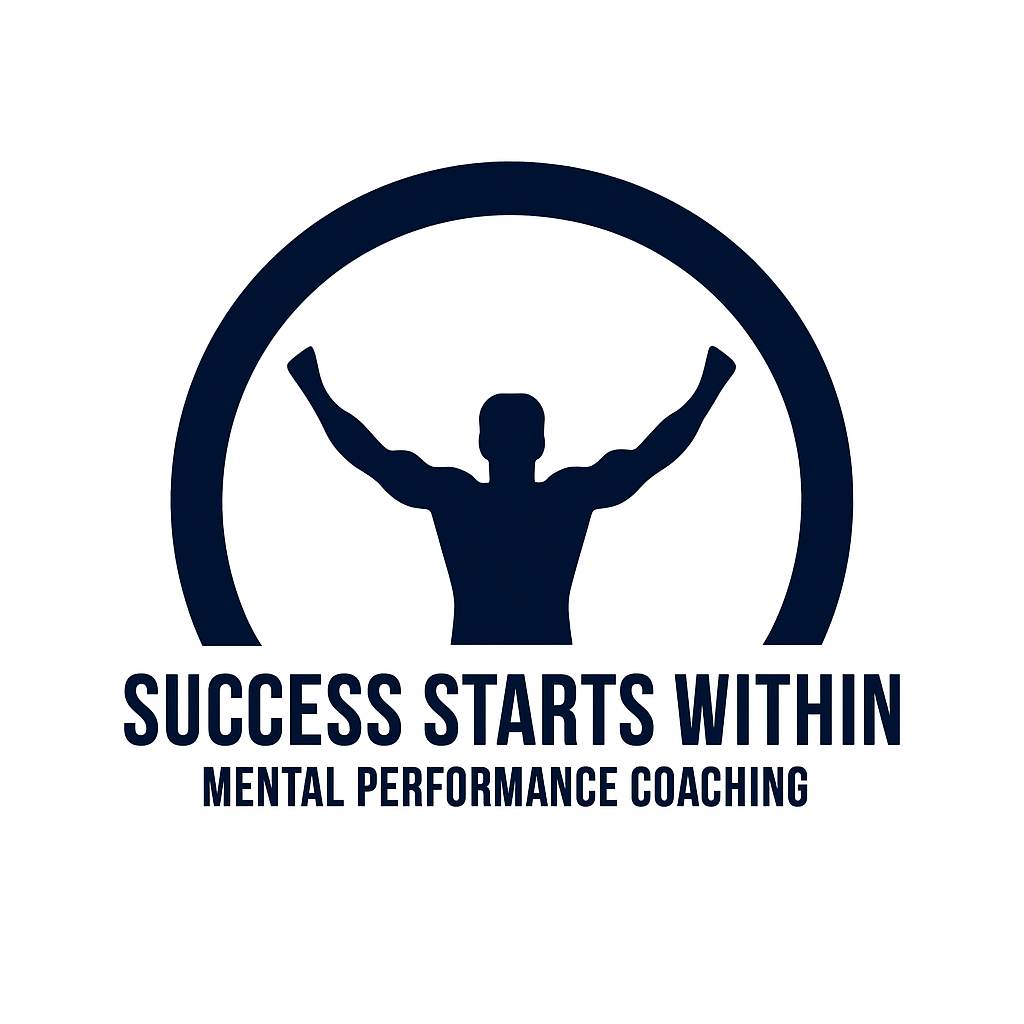“I had a horrible game.”
“Today was a great practice.”
“I played like crap today.”
“I always play well against this team.”
“I’ll never be good enough.”
What do all of these statements have in common? They are examples of all or nothing thinking.
Today either was a good day or it wasn’t a good day. You either are a good player or you aren’t a good player. That’s it. With all or nothing thinking, you allow no room for areas of gray.
Only…it is in these areas of gray where improvement is made.
As an athlete, all or nothing thinking, for the most part, will do you more harm than good.
In this article, you will learn what all or nothing thinking is, the impact it has on your play, and a more productive way for you to think about yourself and your game moving forward.
What is All or Nothing Thinking?
The examples at the beginning of the introduction clearly highlight what this type of thinking is. It is definitive. Stating what you see to be true…even if it’s not actually reality.
Let’s go with the very first example given, “I had a horrible game.”
How many times have you said that in your career? I can tell you that very same sentence made it out of my mouth many times. Sometimes, though, instead of game I’d say practice.
When you state that you had a horrible game, are you giving yourself any opportunity to improve? Well, yes…if you take it a step further. However, with all or nothing thinking, you don’t tend to do that.
One of the defining characteristics of all or nothing thinking is making blanket statements about how badly you played, and then allowing the negative emotions to consume you.
The truth may be that you did have a pretty horrible game, but I guarantee there was one good thing you did. But by exhibiting all or nothing thinking, you never give yourself the opportunity to see such.
In addition, you don’t grant yourself access to much needed information you can use to improve, since you are stuck focusing on how crappy you played.
The same holds true if your thinking is surrounding how great you played. Yeah, you may have had a killer game, but I can almost guarantee there are areas that could be improved.
That leads us into one of the key ways all or nothing thinking impacts your play, it limits you as an athlete.
One of the defining characteristics of all or nothing thinking is making blanket statements about how badly you played, and then allowing the negative emotions to consume you.
Negative Impact of All or Nothing Thinking
As was said in the introduction, some good can come out of all or nothing thinking. However, by far it will have a more negative impact on your play. So, let’s examine all the ways this type of thinking can hold you back.
It Increases Perfectionism
Now it’s natural, as an athlete, to want to do your best. As a mental performance coach, I see this drive in all the athletes I work with. However, you must be careful not to allow this to turn into a need to be perfect.
When you chase perfection, you only hold yourself back from being great.
With all or nothing thinking, you work in absolutes. “Today I was great,” or “Today I was terrible.” That kind of thinking parallels perfectionism. You are training your mind to chase perfection.
Something that, as much as every athlete hates to admit, is impossible.
It Decreases Confidence
Along with high level skills, you must have a high level of self-confidence to be successful as an athlete. Doubting yourself and your abilities will continually hold you back.
With all or nothing thinking, your confidence will decrease. The reason comes from how confidence is formed in the first place.
To build confidence requires the experience of seeing yourself succeed. Something that is drastically limited with all or nothing thinking.
After a practice, if you require close to perfection in order to deem it a good day, the vast majority of practices will be seen as bad. Now, how much opportunity does that leave you to develop the experience of seeing yourself succeed?
Very little.
The more you have all or nothing thinking, the more difficult it is to develop strong and sturdy confidence.
After a practice, if you require close to perfection in order to deem it a good day, the vast majority of practices will be seen as bad. Now, how much opportunity does that leave you to develop the experience of seeing yourself succeed?
It Increases Anxiety
When you’ve made the statement, “I played horribly,” or something similar, how did you feel? My guess is pretty terribly. Was it a feeling you would like to have again? Probably not. So what does your mind do as a result?
It develops sports performance anxiety.
Anxiety results from worrying about what’s going to happen. When there is a known negative emotion attached to a bad game or practice, the natural response is for you to grow anxious.
Of course you don’t want to feel that way again, and so you worry about making mistakes and playing badly, since your all or nothing thinking will lead to you feeling that way if you do.
It Limits Your Growth
Now we get to one of the major problems with all or nothing thinking, even if you are stating how great you played…you are limiting your growth as a player.
To improve, you must see both the good and the bad. The good is used to increase your confidence and prove to yourself you can succeed. The bad is used to identify areas that need to be worked on.
No matter what, both are necessary to your development as an athlete.
However, with all or nothing thinking, such development is limited. You keep yourself from progressing due to your inability to examine both the good and the bad.
If you claim you had a terrible game, that’s all you’ll focus on. Likewise, if you feel like you had a great game, that’s all you’ll focus on.
The more you focus on either side of your game, the greater the emotions that accompany such thoughts will become.
By adopting this mindset, you are limiting your growth as an athlete.
How to Stop All or Nothing Thinking
What’s the opposite of all or nothing thinking? All or some thinking, perhaps?
When we look at the examples given in the introduction, they all involve stating whether you played well today or badly. Your mind immediately goes to one extreme or the other. The same is true when you judge practices.
To stop this type of thinking, you have to completely eliminate the need to state whether it was a good or bad day.
But wait a second…isn’t that what sports are all about?
You either played well, or you played badly, right? How can there be anything in between?
The truth is, we are talking on a level of judment. Judging yourself, that is. Pretty much everyone else will adopt all or nothing thinking when it comes to your performance. In fact, you likely already do something similar when it comes to your teammates.
You say, “So and so played great today,” or, “She had a terrible practice.”
Other people are free to judge us, but we cannot be so black and white when it comes to judging ourselves.
Rather than having all or nothing thinking when it comes to your play, you need to replace that with a more productive self-evaluation practice.
To stop this type of thinking, you have to completely eliminate the need to state whether it was a good or bad day.
Learning to Evaluate Your Performance
Look, you want to play well, that’s a given. You want to be the best player you can be, and so it seems natural to go and constantly judge your performance. I mean, how else will you know you were good enough?
But here’s the thing: judging yourself with all or nothing thinking is only holding you back. Earlier you learned all the negative ways such thinking impacts your game. Do low confidence, fear, anxiety, and poor focus seem like a recipe for peak performance?
Not at all!
If your goal is to be the best you can be as an athlete, then each game and every practice must be used to propel you forward toward growth.
How is this done?
By evaluating your performances rather than judging your performances.
After every practice and game, you should evaluate yourself in an objective way. Do not get tied up emotionally in whether or not you had a good game. Remember…your focus is on growth.
To make the evaluation process easier, there are three simple steps for you to follow:
Step #1: List out everything you did well
This first step is where I run into the most resistance from the athletes I work with.
If you have a great game, it’s easy to look at what you did well. But what about when you played badly? Don’t you need to look to where you can improve? What’s the point of fluffing up your ego if you honestly played like crap?
Well, for two reasons: first you are working to build your confidence, and second, you are putting yourself in a good position to then look at where you can improve.
As an athlete, confidence is one of the most important pieces to your success. To build confidence, you need to see yourself succeed. First focusing on what you did well gives you the opportunity to see success each practice and game.
Then, it’s all about getting you in a good mindset to move on to step two. When you feel like you had an awful game, are you typically thinking clearly and analyzing your game effectively? Probably not. I’d imagine you’re kind of drowning in feelings of despair.
First focusing on what you did well will make sure that doesn’t happen!
Aim for at least five items on your list and then move on to the next step.
Step #2: List out what you can improve upon
Notice how I didn’t say to list out what you did wrong?
That’s because such focus is useless if it’s not then put into action to better your game. What we’re going to do is immediately ask ourselves where we can improve.
These will typically involve what you did wrong and the mistakes you made, but you’re approaching it in a different way.
When you are making your list, get specific. What about the certain mistake can you improve? Don’t just say something like, “I need to shoot better.” Think about what aspects of your shot need to be worked on.
The more specific you get, the more improvement you’re going to make.
Step #3: Put it into action
For the last step, you are going to take the list you made in step two and turn it into actionable objectives for the week.
Let’s use the example of wanting to shoot better. You thought about it and realized you need to get better at shooting off the dribble.
You take that information and you put it into action for the week. You decide that for the next seven days you are going to take fifty shots off the dribble on your own. This is something you can do outside of practice.
The same idea applies no matter what sport you play or area of your game you identified needs improvement. You simply set yourself a practice plan for the days moving forward.
Final Thoughts
All or nothing thinking is when you bluntly state whether you played well or badly.
You likely say things like, “Today I played like crap,” or “I had a great practice.”
While it feels great when things go your way, the vast majority of the time with this type of thinking, you are doing nothing but limiting yourself as an athlete.
Instead, you want to work on replacing all or nothing thinking with a more productive self-evaluation process.
First, list out everything you did well. Next, list out where you can improve. Lastly, put the areas you can improve into action by setting yourself a practice plan for the week.
Doing so will help to reduce all or nothing thinking and help you continually improve as an athlete. Thank you for reading and I wish you the best of success in all that you do.




